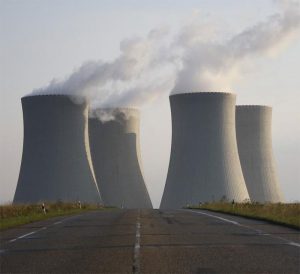Nuclear disaster threatens us more than ever.
Another nuclear disaster?
German and French specialists suspect a new nuclear accident took place this year in September.
But no official source involved confirm it.

Nuclear disaster threatens
Thus, a cloud of radioactive pollution recently came across Europe, indicating an accident taking place in a Russian or Kazakhstan nuclear facility. Studying its trajectory and weather patterns, researchers argue that, most likely, the accident happened south of the Ural mountains, between the Urals and the Volga river. Apparently, the accident released a major quantity of ruthenium 106, very dangerous for people and for nature a number of kilometers around the accident.
What the truth is ?
However, specialists emphasize that no accident in a nuclear reactor took place, as such nuclear disaster causes contamination with many other highly dangerous elements.
Although Russia and Kazakhstan do not confirm the accident, the Russian state weather service Roshydromet acknowledge an extremely high pollution of ruthenium 106 in the Urals. Nuclear disaster threatens us again.
More risks of radioactive pollution
Risks of radioactive pollution come also from North Korea. The North Korean government organized at least six nuclear tests of which two in the last year and one in September this year. These tests produce dangerous earthquakes. Moreover, South Korea meteorological institutions warn that the testing area is pretty saturated. Thus, one more test can cause an extremely dangerous radioactive pollution.
Fukushima plant – a constant source of radiation
Unfortunately, our planet faces constant radiation. Therefore, the Fukushima power plant issue is not fully solved. Nuclear disaster threatens again. Since the meltdown, radiation from the plant continually leaks into the Pacific Ocean. Although the radiation level is not high enough to poison humans, the ocean underwater life suffers tremendously. For instance, many fishes in the area now tests positive for huge amounts of radiation. Consequently, fishes industries in the area closed. But new studies points that fish with alarming levels of radiation due to the Fukushima leak, are now at the northwest coast of the United States and in Canada.
The Chernobyl Disaster
But no other nuclear accident was ever as catastrophic as the Chernobyl one. The Chernobyl disaster took place on 26 April 1986, within the Soviet Union, now Ukraine. A flawed reactor design, poorly trained personnel, a power failure – and Reactor Number 4 exploded. Thousands and thousands of people died. Even more people were exposed to radiation and lived with the scars of the disaster all their lives. Hundreds of thousands of people living in the contaminated area – declared exclusion zone – had to evacuate.
The First Refugees
In a hurry, they left their homes, with the little they could take with them, with all their memories, with all their dreams, dreams that would never come true. They left behind their family houses with most of their belongings, the children’s schools, most of the childhood souvenirs, the daily routines, their jobs and careers and the promises in a better future, their neighborhoods, their cultural center, their music. Long before the worldwide understood the word ‘refugee’, they became refugees, victims of a war they weren’t aware they were fighting, but a war that they lost.
Victims or Survives?
Some of them suffer from radiation, others suffer of fear about the effect of radiation on them and on their children. They don’t see themselves as survivors but as victim. Older and young, they all feel helpless and unable to control their futures. Most of them don’t strive for a future any longer.
What is the future reserving us?
By all accounts, Chernobyl is still radioactive and still very dangerous. Nuclear disaster threatens once more. The cement containment sarcophagus, isolating what is left of Reactor Number 4, is weakening. A collapse means a second catastrophe. Ukrainian officials estimate the area would not be safe for human life again for another 20,000 years. But people don’t seem to fear it anymore. More than four hundred former local residents, , mostly old poor farmers and former plant workers, are returning and claiming back their homes, resettling inside the exclusion zone.




